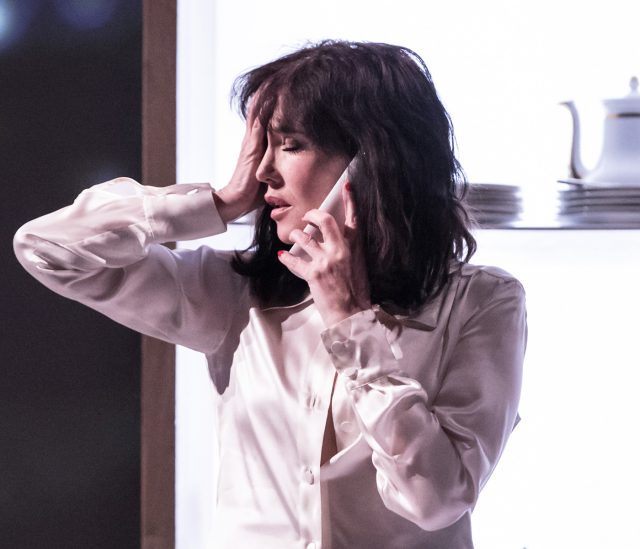
FIAF’s Crossing the Line Festival opens with Isabelle Adjani in Opening Night (photo © Simon Gosselin)
French Institute Alliance Française, Florence Gould Hall
55 East 59th St. between Madison & Park Aves.
September 12-14
Festival continues through October 12
212-355-6160
crossingthelinefestival.org/2019
After the audience has settled in at FIAF’s Florence Gould Hall for Cyril Teste’s multimedia adaptation of John Cassavetes’s 1977 film Opening Night, there appears to be confusion on the stage, as a man in headphones converses in French with an unseen tech crew, their words not translated on the supertitles screen. It’s a disorienting moment, especially if you don’t understand French, and a terrific introduction to one of the themes of the play, the pull between fact and fiction, fantasy and reality inherent in theater and cinema. The man in the headphones is the play-within-a-play’s director, Manny (Morgan Lloyd Sicard), who is helming a melodrama featuring famous actress Myrtle Gordon (five-time César winner Isabelle Adjani) and her stoic costar, Maurice (Frédéric Pierrot); in the original film, itself based on a play by John Cromwell, Gena Rowlands was Myrtle, her real-life husband, Cassavetes, was Maurice, and one of their closest friends, Ben Gazzara, was Manny, their personal relationships further blurring the lines of reality.
With opening night a day away, Myrtle is having trouble with her lines and her physical presence, particularly in a scene that involves Maurice slapping her. She’s becoming emotionally unhinged, having a nervous breakdown, spurred by the earlier accidental death of a seventeen-year-old fan seeking an autograph and Myrtle’s inability — or overt unwillingness — to relate to her character, who is all too much like her, as if she is unable to face her own fate. Throughout the play’s eighty-five minutes, there is an additional figure onstage, cameraman Nicolas Doremus, who follows the characters as they move about Ramy Fischler’s elegant living-room set, which features a couch, a table, knickknacks on shelves, a visible backstage area with Agnès b.’s costumes, and, at the very center, a large screen where Doremus’s footage streams live, offering viewers a different angle on what’s happening. At one point, Doremus zooms in close on Manny and Myrtle, who might be about to kiss, the cameraman completing a kind of love triangle between life and artifice; at another, Doremus films other characters behind stage sharing their concerns as Myrtle is alone on the couch, drinking away her pain. Everyone is dressed in dark colors, mostly black, signaling potential doom.
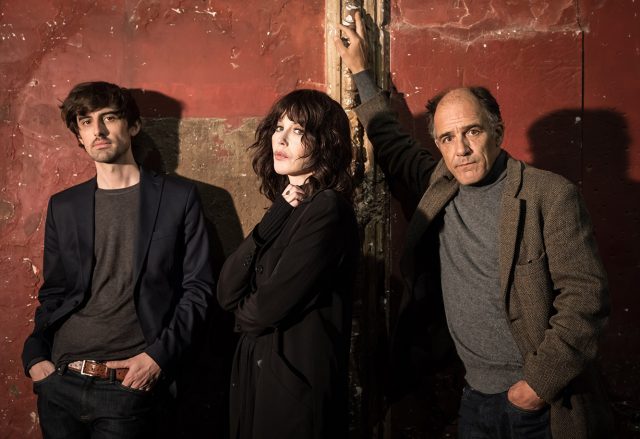
Morgan Lloyd Sicard, Isabelle Adjani, and Frédéric Pierrot star in Cyril Teste’s multimedia adaptation of John Cassavetes’s Opening Night at FIAF
Teste (Patio, Nobody) based his script on Cassavetes’s screenplay more than the final film itself, although he did use the director’s longtime friend and cinematographer, Al Ruban, who shot Opening Night, as a consultant. Teste encourages improvisation and changes stage directions every night, ensuring that each performance is unique in a way a film can never be yet still capturing the essence of the movie. “While Cassavetes’s other great films are models of immediacy — gut-level attempts to devise a cinematic syntax that accounts for and responds to the quantum flux of moment-to-moment experience — the doubly framed and multiply mirrored Opening Night operates at a remove,” Dennis Lim notes in his Criterion essay, which is appropriately titled “The Play’s the Thing.” He continues, “The filmmaker’s habitual insistence on the inseparability of actor and character (and of art and life) reverberates here within the haunted corridors of a backstage melodrama.” Adjani (The Story of Adele H, Queen Margot) is ravishing in her New York theatrical debut, her regal stage demeanor working hand-in-hand with her total command of the screen; we get to see both facets of her immense talent at the same time, which is both a treat and disconcerting; non-French speakers will lose a little as they avert their eyes to the supertitles while also deciding whether to look at the activity onstage, backstage, or onscreen. Sicard is superb as the director, and Pierrot is hardy as the skeptical Maurice, but Doremus stands out by not standing out even as he is right in the middle of the action. Opening Night opens FIAF’s monthlong Crossing the Line Festival and is supplemented by “Magnetic Gaze: Isabelle Adjani on Screen,” consisting of ten of her films shown on Tuesdays through October 29.
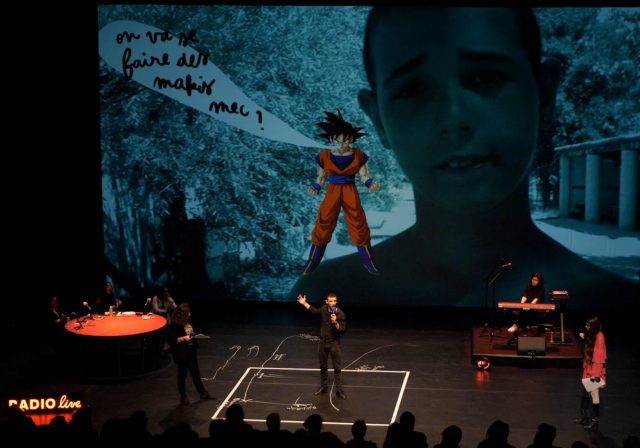
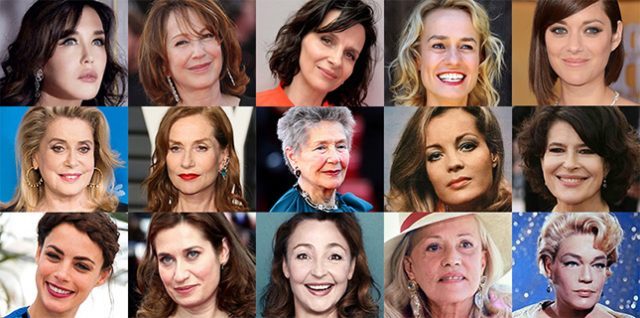
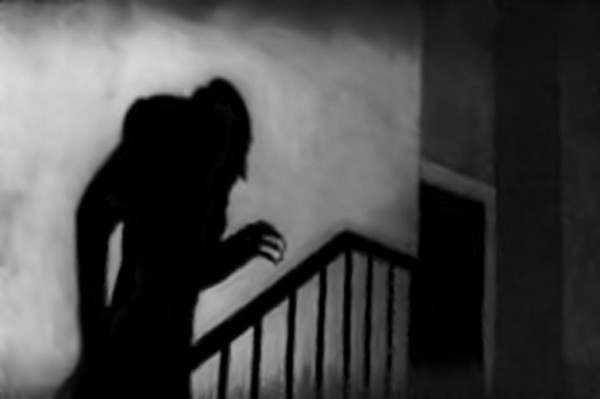
 In F. W. Murnau’s classic horror film, Max Schreck stars as Count Orlok, a creepy, inhuman-looking Transylvanian who is meeting with real estate agent Thomas Hutter (Gustav von Wangenheim) in order to buy a house in Germany. Hutter soon learns that the count has a taste for blood, as well as lust for his wife, Ellen (Greta Schröder), whom he has left behind in Germany. When Count Orlok, a bunch of rats, and a group of coffins filled with Transylvanian earth head out on a ship bound for Wisborg, the race is on to save Ellen, and Germany. Murnau’s Nosferatu is set in an expressionist world of liminal shadows and fear, as he and cinematographers Fritz Arno Wagner and Günther Krampf continually place the menacing Orlok in oddly shaped doorways that help exaggerate his long, spiny fingers and pointed nose and ears. Unable to acquire the rights from Bram Stoker’s estate to adapt the Gothic horror novel Dracula into a film, writer Henrik Galeen (The Golem, The Student of Prague) and director Murnau (Sunrise, The Last Laugh) instead made Nosferatu, paring down the Dracula legend, changing the names of the characters, and tweaking the story in various parts. Upon its 1922 release, they were sued anyway, and all prints were destroyed except for one, ensuring the survival of what became a defining genre classic. In 1979, German auteur Werner Herzog (Woyzeck, Fitzcarraldo) paid tribute to the earlier film with Nosferatu the Vampyre, a near scene-by-scene homage to Murnau’s original but with Stoker’s character names restored, as the book was by then in the public domain. Hans Erdmann’s complete score no longer exists, so numerous musical compositions have accompanied screenings and DVD/VHS releases over the years; at Film Forum, pianist Steve Sterner will offer his take on November 4 at 7:30.
In F. W. Murnau’s classic horror film, Max Schreck stars as Count Orlok, a creepy, inhuman-looking Transylvanian who is meeting with real estate agent Thomas Hutter (Gustav von Wangenheim) in order to buy a house in Germany. Hutter soon learns that the count has a taste for blood, as well as lust for his wife, Ellen (Greta Schröder), whom he has left behind in Germany. When Count Orlok, a bunch of rats, and a group of coffins filled with Transylvanian earth head out on a ship bound for Wisborg, the race is on to save Ellen, and Germany. Murnau’s Nosferatu is set in an expressionist world of liminal shadows and fear, as he and cinematographers Fritz Arno Wagner and Günther Krampf continually place the menacing Orlok in oddly shaped doorways that help exaggerate his long, spiny fingers and pointed nose and ears. Unable to acquire the rights from Bram Stoker’s estate to adapt the Gothic horror novel Dracula into a film, writer Henrik Galeen (The Golem, The Student of Prague) and director Murnau (Sunrise, The Last Laugh) instead made Nosferatu, paring down the Dracula legend, changing the names of the characters, and tweaking the story in various parts. Upon its 1922 release, they were sued anyway, and all prints were destroyed except for one, ensuring the survival of what became a defining genre classic. In 1979, German auteur Werner Herzog (Woyzeck, Fitzcarraldo) paid tribute to the earlier film with Nosferatu the Vampyre, a near scene-by-scene homage to Murnau’s original but with Stoker’s character names restored, as the book was by then in the public domain. Hans Erdmann’s complete score no longer exists, so numerous musical compositions have accompanied screenings and DVD/VHS releases over the years; at Film Forum, pianist Steve Sterner will offer his take on November 4 at 7:30.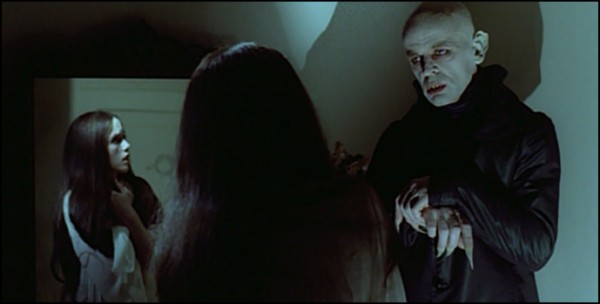
 Nearly sixty years after Murnau battled the Stoker estate, Herzog remade Nosferatu with an all-star cast featuring Bruno Ganz as real estate agent Jonathan Harker, Isabelle Adjani as his wife, Lucy, and Klaus Kinski as Count Dracula. Shot in flat colors by Jörg Schmidt-Reitwein and set to a score by German electronica band Popol Vuh, Herzog’s Nosferatu follows the same path as Murnau’s, as Jonathan Harker travels to Transylvania to have the count sign a contract, discovers that Dracula likes blood and sleeps in a coffin, then tries to save his wife when the count and thousands of (purportedly mistreated) rats sail to Wismar, renewing fears of plague. Kinski plays the count as a sad, lonely figure who no longer belongs in the modern world. He’s desperate for human contact, and his castle has seen much better days. Kinski often seems to be shot in black-and-white, surrounded by color, as if he were from another time, except for his shockingly red lipstick. It’s a virtuoso performance that is significantly more nuanced than Schreck’s, which is a more direct take on the character. Both films are gems; Film Forum is showing a new 35mm print of the rare German-language version of Herzog’s remake through November 7; on November 4 you can see them both, with separate paid admission.
Nearly sixty years after Murnau battled the Stoker estate, Herzog remade Nosferatu with an all-star cast featuring Bruno Ganz as real estate agent Jonathan Harker, Isabelle Adjani as his wife, Lucy, and Klaus Kinski as Count Dracula. Shot in flat colors by Jörg Schmidt-Reitwein and set to a score by German electronica band Popol Vuh, Herzog’s Nosferatu follows the same path as Murnau’s, as Jonathan Harker travels to Transylvania to have the count sign a contract, discovers that Dracula likes blood and sleeps in a coffin, then tries to save his wife when the count and thousands of (purportedly mistreated) rats sail to Wismar, renewing fears of plague. Kinski plays the count as a sad, lonely figure who no longer belongs in the modern world. He’s desperate for human contact, and his castle has seen much better days. Kinski often seems to be shot in black-and-white, surrounded by color, as if he were from another time, except for his shockingly red lipstick. It’s a virtuoso performance that is significantly more nuanced than Schreck’s, which is a more direct take on the character. Both films are gems; Film Forum is showing a new 35mm print of the rare German-language version of Herzog’s remake through November 7; on November 4 you can see them both, with separate paid admission.